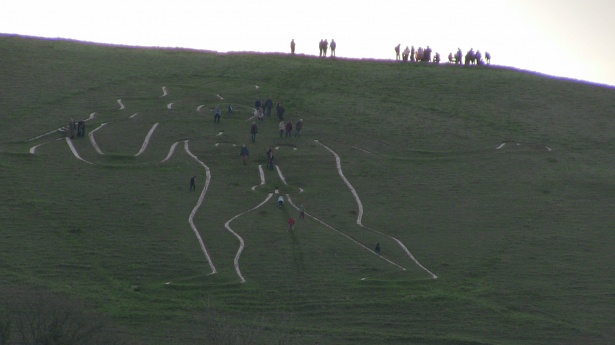Debate has long raged over the age of the Rude Man of Cerne Abbas, Britain’s largest chalk figure. Was it prehistoric? Roman? Or was it an elaborate wind-up of Oliver Cromwell’s puritans? In 2020, the National Trust, which owns the site, sent a team of archaeologists to thoroughly examine the sediment on the hillside in order to provide a definitive answer. After a year-long survey, the team concluded that the chalk figure was probably late Saxon in origin. However, the earliest record of the giant dates back to 1694. The most likely explanation is that it was early medieval originally, but had become overgrown, and was rediscovered some time in the late 17th century.
According to some of the more fanciful medieval “histories”, the figure was a representation of a pagan deity named Helith, who was worshipped in the area, When St Augustine of Canterbury tried to convert the villagers of Cerne Abbas during his mission to the English, they mocked him and his missionaries by pinning fish tails to their backs, a parody of the Christian ΙΧΘΥΣ symbol. As punishment, God made them sprout fish tails for real.
During World War 2, the giant was allowed to become obscured again, to prevent it from being used as a landmark by Luftwaffe bombers. Since then, it has been re-chalked every decade or so, a process that requires some 17 tonnes of chalk each time, while sheep are allowed to graze on the hill, in order to keep the grass short.
The Wessex Ridgeway passes within a mile of the giant. and it is only a quarter of a mile from the village of Cerne Abbas. On weekdays, Damory Coaches bus service 216 between Dorchester and Sherborne stops at the viewing area. The postcode, for satnav purposes, is DT2 7AL.





